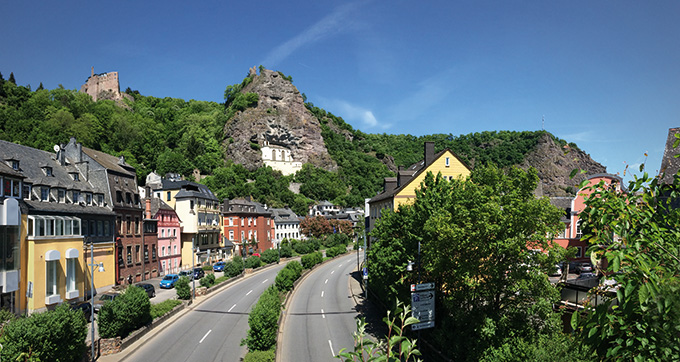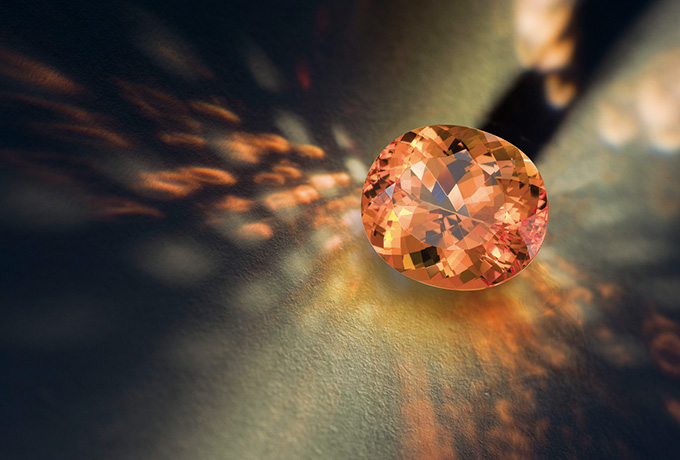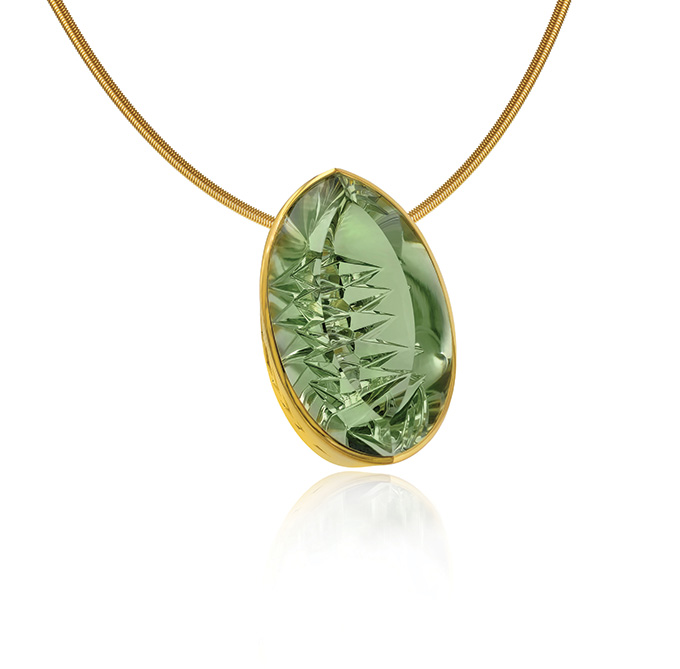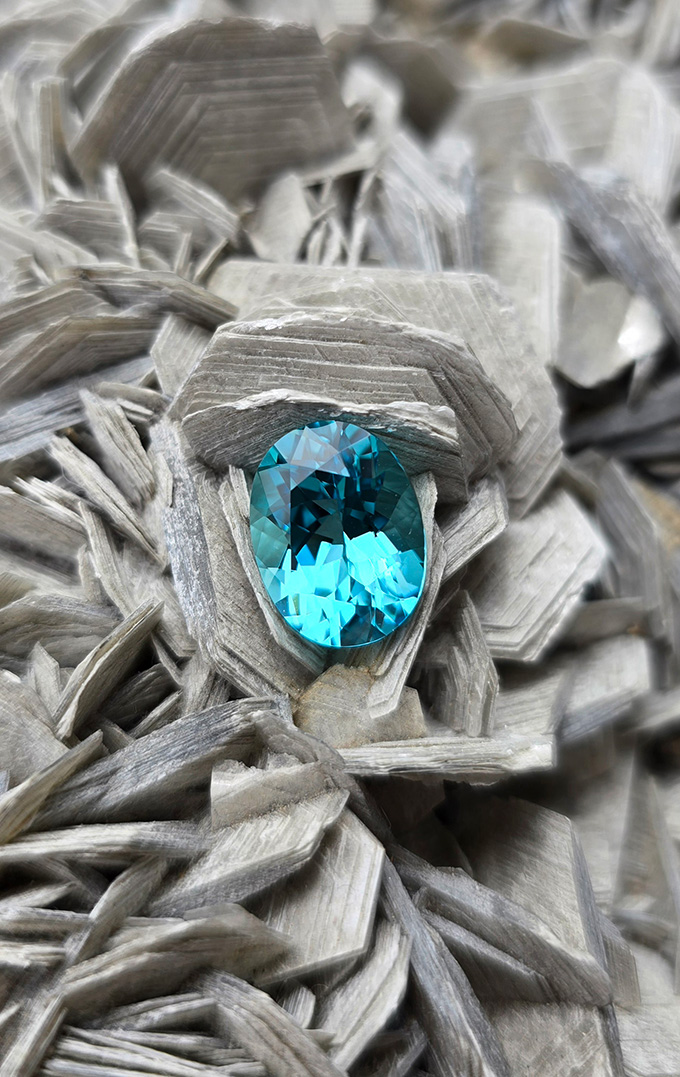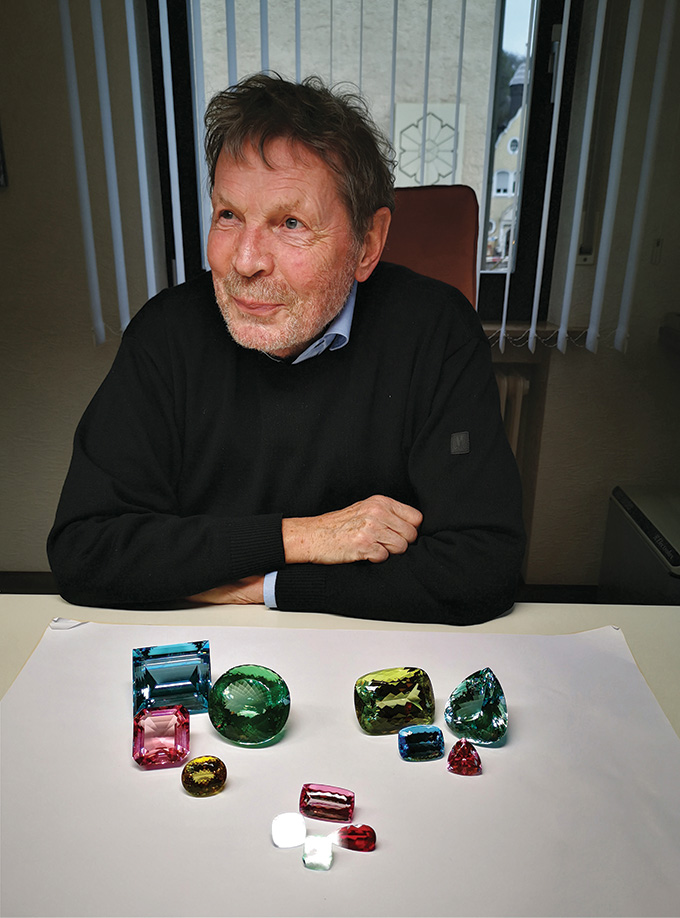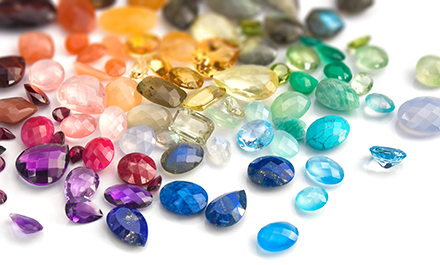Germany’s premier gemstone cutting and trading centre, Idar-Oberstein, is home to some of the world’s most celebrated lapidarists whose passion and trailblazing attitude drive creativity in the coloured gemstone world.
This article first appeared in the JNA September/October 2024 issue.
Rolling green hills punctuated by tall jagged rocks that cradle an 11th century church, a medieval castle and the gentle flow of a small river is not quite the setting for extraordinary industry and creative passion. But in the case of Idar-Oberstein, a small picturesque town in southwestern Germany, it definitely is.
Behind the facades of charming pastel buildings is a thriving heart of creativity, an indomitable pioneering spirit and a quiet sense of cooperation.
Despite its relative remoteness – access by air is via Frankfurt or neighbouring Luxembourg – Idar-Oberstein is on the radar of designers and collectors worldwide who seek out rarities, both as polished gems and objects of art.
Its fame as a cutting centre started 600 years ago when gemstones such as agate, jasper, amethyst and carnelian were discovered there. Idar-Oberstein residents are credited with developing the first vertical sandstone grinding wheels powered by water from the Idar stream. As innovation and skill developed, the cutting industry boomed and the town became famous for its polished gemstones and objects. By the 1800s, the deposits had dwindled, but it was then that the cutters of the town became pioneers and international players. Facing stark adversity, many left in search of gemstone rough, sailing as far as Brazil where their knowledge helped pinpoint its undiscovered gemstone deposits including the agate reserves in Rio Grande do Sul. As early as 1834, large quantities of agate and other gemstones were being shipped home, mostly as ballast on vessels that had offloaded cargo in Brazil.
Nearly 200 years later, it is this inherent innovative mindset, passion and creativity that still drive the town’s industry.
“The extraordinary expertise and skill of the companies in Idar-Oberstein primarily serve demand for fine one-of-a-kind gemstones in consumer markets worldwide,” explained Constantin Wild, managing director of Constantin Wild GmbH & Co KG – a company founded by Constantin's great-grandfather in 1847. Constantin is the 10th generation owner and gem specialist who continues to imbue passion and innovation into Constantin Wild's creations.
“Companies here leverage generational dedication and deep knowledge to meet the global demand for unique gemstones,” he noted.
Paraiba tourmaline, mandarin garnet, imperial topaz, aquamarine and a variety of sapphires are his company’s current focus.
Many German lapidarists recognise collaboration as a key to staying competitive. In 2001, two prominent family-run businesses merged to create a joint venture, Wild & Petsch GmbH, in Kirschweiler with precision cutting as its main strength.
“We have the capability to facet gemstones with tolerances as low as 0.02mm,” company co-owner Thomas Petsch said. “We adopted new technologies from various industries and these ‘trade secrets’ steeped in technique and experience help provide consistency in colour, cut and size to meet our clients’ requirements.”
Wild & Petsch’s main varieties are sapphire, ruby, Paraiba tourmaline, beryl, aquamarine, peridot, tsavorite garnet and fine quartz.
Gemstone hunts
The pioneering spirit of the 19th century gemstone adventurers is embodied in Hans-Jürgen Henn of Henn GmbH who since the early 1960s has been travelling the world searching for special material. His adventures started in the gem fields in Ratnapura, Sri Lanka.
“I learned a lot from the dealers in Sri Lanka. They gave me the knowledge and inspiration to go forth into the gemstone world,” Hans-Jürgen revealed. Alexandrites; blue, yellow and pink sapphires; and the magnificent Padparadscha sapphire were among his favourite purchases.
In the 1980s when news of a ruby find in the John Saul mine in Kenya reached Idar-Oberstein, Hans-Jürgen was one of the first to arrive and purchased a selection of rough. Similarly, the first Paraiba tourmalines to reach the world market came from him.
“I was the first to come out of Brazil with a handful of these first Paraibas. We did not know the value of this find and sold the pieces for virtually nothing. For example, a 6.5-carat unheated Paraiba sold to the Smithsonian for 6,500 Deutsche Marks (around US$3,600),” he recalled.
The next big find was the spessartite or mandarin garnet in Namibia, which he brought to market. But the most spectacular discovery for him was peridot in 1992 in the Himalayas of Kashmir. An avid mountaineer, he was hiking the Himalayas when a local dealer showed him the first pieces from a new find that miners working on a magnesite vein for high-tech industrial purposes had stumbled upon.
Hans-Jürgen said, “The agent believed they were emerald. I suspected they were peridot, and Dr Hermann Bank, head of the German Gemmological Institute at the time, confirmed the samples as peridot that had formed at the same time as the Himalayas.”
In the Henn showroom in Idar, he reveals some of the earth’s treasures sculpted by local carvers and cutters. His son, Axel, runs the local operations while his younger son, Ingo, a goldsmith who works out of his Henn of London studio in Hatton Garden, sets some of these fine creations into jewels.
New tech
Idar-Oberstein is defined by its drive to innovate. The current focus is on new technologies, and companies such as Constantin Wild use computer-aided design (CAD), computer numerical control (CNC) and even artificial intelligence (AI).
“We are exploring AI's potential across various applications, from enhancing design and cutting processes to revolutionising our marketing strategies,” Constantin disclosed. Recently, the company created new branding using an AI-generated campaign.
New technology, he emphasised, is however only a tool to complement hand cutting. “We cherish the centuries-old tradition of hand cutting. Modern technology and traditional craftsmanship are not an ‘either/or’ choice; it is part of our toolkit, to achieve maximum quality,” Constantin said.
It is this inclusive pragmatism together with its exceptional creativity, trailblazing attitude, strong scientific community and advanced gemmological and lapidary education that make Idar-Oberstein a unique gemstone ecosystem: A sustainable centre that has an inherent capability to continue to supply rare treasures to gemstone lovers for decades or even centuries to come.
Munsteiner legacy
In a light-filled studio in nearby Stipshausen, Bernd Munsteiner invented the fantasy cut – concave cuts made on the back of gemstones – and pioneered a new movement in the way gemstones are shaped and cut.
In an interview a few weeks before he passed away on June 6, 2024, he shared that the driving passion of his artistic life was to “discover the aura of each gemstone crystal and make visible the internal life and natural beauty hiding within.”
He learned these skills from his father, Viktor, before going to art school in Pforzheim to study sculpture and painting. On his return in the 1970s, he built the studio with the help of an architect friend. From there, he created hundreds of gemstone wonders that are in museums around the world or treasures of private collectors.
Many extraordinary gemstones came to him in serendipitous ways, but the one that marked the pinnacle of his creations is Dom Pedro, a 35cm-tall, 10,363-carat aquamarine carving that is now in the Smithsonian’s National Gem Collection in Washington DC. Dom Pedro was the result of cooperation between him and Hans-Jürgen Henn of Henn GmbH who discovered the 52cm-tall, 26-kilogram aquamarine rough on a visit to Brazil.
“It was my greatest challenge. The rough sat in my studio for three months while I obsessed about it, making hundreds of sketches and waiting for the knock of inspiration. It came when I turned the piece upside down in a gesture that connected it to the earth. It took one year to create the final piece,” Munsteiner said in the interview.
The skill of the artist passes from father to son. Bernd’s son, Tom, created his own work for a few decades while Tom’s wife, Jutta, a jewellery artist from Hermeskeil who trained as a goldsmith in Trier, set them into jewellery. Tom passed away in December 2023.
Now Tom’s son, Philipp, who learned from both father and grandfather, creates his own pieces and recently won a German gemstone and jewellery award in the young talent category for his Dragon Egg cut. The latest version is a collaboration between Jutta and Philipp: A 67.03-carat beryl Dragon Egg set in yellow gold.
“Philipp and I will continue to work with all our passion to keep the Munsteiner’s pioneering spirit of innovation and creativity alive,” Jutta affirmed.




